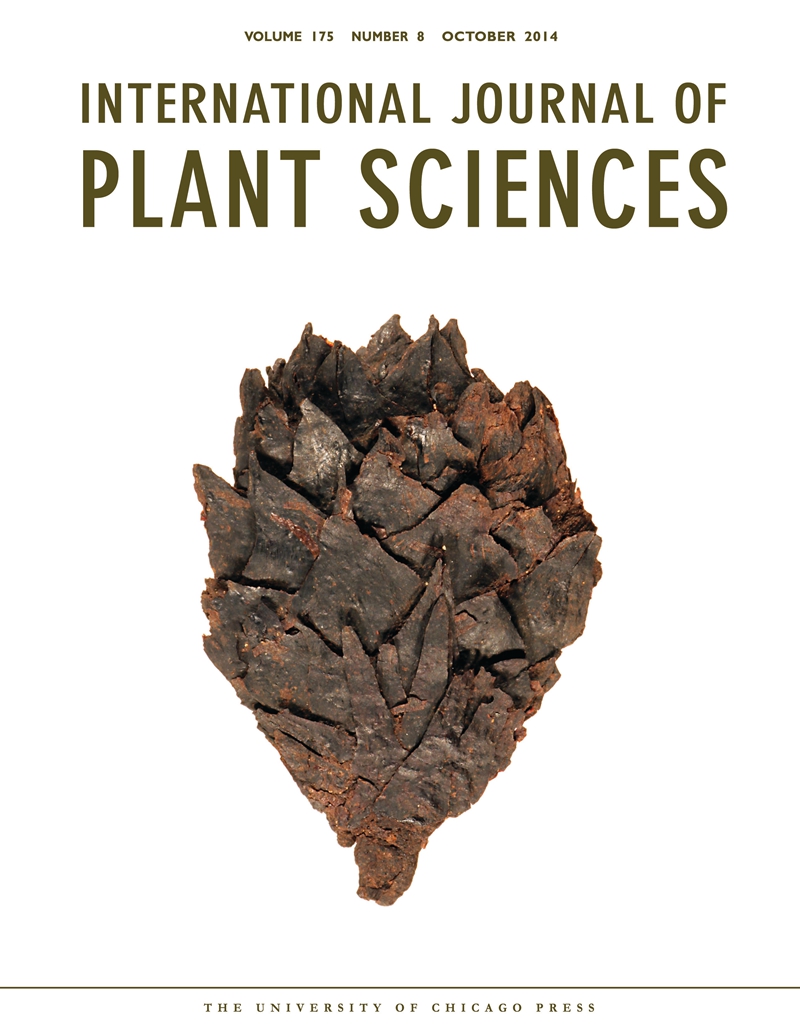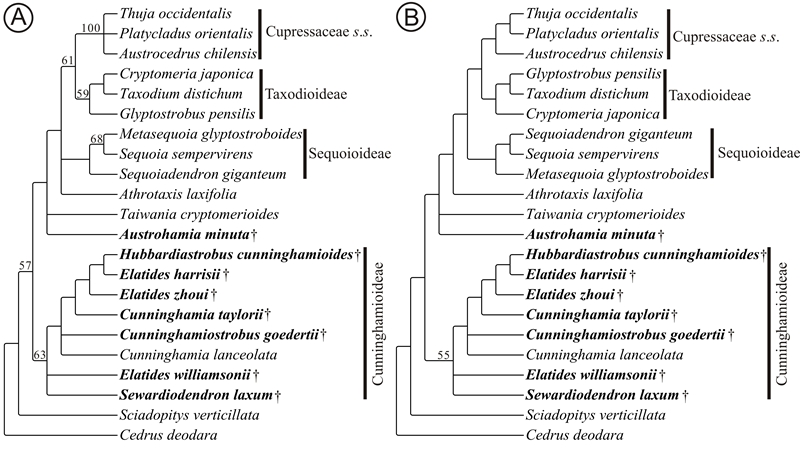The genus Cunninghamia (Chinese fir) is endemic to East Asia with only two extant species commonly found in South China. Molecular phylogenetics resolves Cunninghamia as the sister group to all other extant Cupressaceae sensu lato. An early divergence of extant Cunninghamia is consistent with the early appearance of Cunninghamia-like fossils in the paleobotanical record. Ancient fossil Cupressaceae e.g. Elatides, Sewardiodendron from the Middle Jurassic are similar to extant Cunninghamia in overall morphology. However, an important question is whether these early Cunninghamia-like taxa represent a grade of early Cupressaceae or monophyletic group.
In a recent study, Dr. SHI Gongle from Nanjing Institute of Geology and Palaeontology, Chinese Academy of Sciences (NIGPAS) and colleagues from the US, Mongolia, Japan and Germany described and whole-plant reconstructed a new species of Cunninghamia-like fossils (Elatides zhoui sp. nov.) from the Early Cretaceous of Mongolia. Material of E. zhoui is abundant and consists of well-preserved lignified foliage with organically attahced pollen cones and seed cones. The new species was named after Professor ZHOU Zhiyan in honor of his landmark contributions to understanding Mesozoic gymnosperms. Cladistic analyses based on 22 morphological characters for 22 fossil and extant Cupressaceae species resolve an expanded Cunninghamioideae clade that are composed of extant Cunninghamia and Cunninghamia-like fossils as the sister group to all other Cupressaceae.
The phylogenetic analyses confirm the early divergence of Cunninghamia in the Middle Jurassic (ca. 170 Myr) or earlier. In the age of dinosaur, the progenitors of the Chinese fir were distributed throughout the North Hemisphere and were morphologically and ecologically more diverse in the past than today.
This research was published as cover paper in International Journal of Plant Sciences. It was supported by the National Natural Science Foundation of China and a grant for new method and technique in Paleontology from the NIGPAS.
Reference: Shi G., Leslie A.B., Herendeen P.S., Ichinnorov N., Takahashi M., Knopf P., Crane P.R., 2014. Whole-plant reconstruction and phylogenetic relationship of Elatides zhoui sp. nov. (Cupressaceae) from the Early Cretaceous of Mongolia. International Journal of Plant Sciences 175, 911–930.

Seed cone of Elatides zhoui

Reconstructed phylogeny for living and fossil Cupressaceae.

